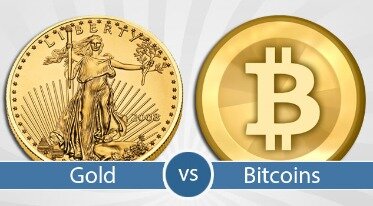Contents
A counterparty is the party on the other side of a transaction, since a financial transaction requires at least two parties. The CSA document defines the amount of the collateral and where it will be held. The main purpose of a CSA is to define and record the collateral offered by both parties in a derivatives transaction in order to ensure that they can cover any losses. A forward contract is a customized contract between two parties to buy or sell an asset at a specified price on a future date.
Thus, firms must ensure their infrastructures can support compliance with the new initial margin regulations via SIMM well in advance of becoming in-scope, since setting up the model is time consuming. On the other hand, derivative bitcoin casino sites uk no deposit bonus, bitcoin casino games uganda instruments can also increase additional risks like counterparty default. Derivative trading isn’t for beginner investors, as more complex processes are involved, and thorough research and understanding is required beforehand.

Treasurers are searching for a way to monitor, centralize and manage all derivative-collateral exposures and related legal documentation in real-time with a reliable workflow, integrated with market-leading data. It’s critical that this tool also be fully compliant with the most recent Dodd-Frank and EMIR regulations. A liability swap is a financial derivative in which two parties exchange debt-related interest rates, usually a fixed rate for a floating rate.
What are different types of derivatives?
Noteholder Collateral means all of the assets of any Grantor, whether real, personal or mixed, with respect to which a Lien is granted as security for any Noteholder Claim. First Priority Collateral means all assets, whether now owned or hereafter acquired by the Borrower or any other Loan Party, in which a Lien is granted or purported to be granted to any First Priority Secured Party as security for any First Priority Obligation. U.S. Collateral means any and all property owned, leased or operated by a Person covered by the U.S. Loan Party, now existing or hereafter acquired, that may at any time be or become subject to a security interest or Lien in favor of the Administrative Agent to secure the Secured Obligations. Notes Collateral means all property subject, or purported to be subject from time to time, to a Lien under any Security Documents. Optimizing collateral essentially means determining what collateral is available, eligible and desirable, he adds.
- Derivative trading isn’t for beginner investors, as more complex processes are involved, and thorough research and understanding is required beforehand.
- Derivative collateralization became more prevalent in the 90s, which led to the development of standardized rules by the International Swaps and Derivatives Association in 1994.
- In the event of a default, the lender can seize the collateral and sell it to recoup the loss.
- Then the collateral teams on both sides establish the collateral relationship.
Speculators are individual traders who aren’t interested in the physical product, and their main aim is to profit from the underlying assets, such as stocks or commodities, and price movements. The four most common derivative types are futures, options, swaps, and forwards. Derivatives can pull value from any underlying asset based on several use cases and transactions – exchanging goods and services or financial securities in return for money.
Examples of Collateral Loans
Party B then presents some form of collateral to party A to mitigate the credit exposure that arises due to positive MtM. Collateral has to be returned or posted in the opposite direction when exposure decreases. In the case of a positive MtM, an institution calls for collateral and in the case of a negative MtM they have to post collateral. The most common types of derivatives include futures, options, swaps, and forwards.
- As regulatory reform continues to impact the derivatives market, changes to standardization, transparency, collateral management and credit risk could increase your large infrastructure investments.
- In the United States, Deloitte refers to one or more of the US member firms of DTTL, their related entities that operate using the „Deloitte“ name in the United States and their respective affiliates.
- If a borrower defaults on the loan, the lender can seize the collateral and sell it to recoup its losses.
- A derivatives contract is an agreement to buy or sell a specific number of shares of a stock, a bond, an index, or any other asset at a specific date.
- There are four types of derivative contracts, and below, we’ll explain in detail what each is, their functionalities and the specific benefits and risks they carry.
- Your broker will set the maintenance margin, which is the minimum amount that should be on your account throughout the contract, usually around 50% to 75% of the initial margin.
Other advantages of using collateral include the ability to price derivatives more competitively by reducing the charge for credit factored into derivative spreads and also the ability to access more complex or higher risk trades. Derivatives are one of the largest, fastest-growing, and most dynamic financial instruments, as they generate new opportunities and can split risk between several parties. Derivative trading can offer leverage and therefore multiply profit with less equity needed. Institutional investors – companies, banks, corporations, and speculators – use currency swaps and include two parties to exchange a notional principal – a theoretical interest rate value each side pays in agreed intervals. Credit fault swaps were used by one of the largest investment banks, Lehman Brothers, in 2008, at the heart of the financial crisis caused by sub-prime mortgage-backed securities . After the crash, the company suddenly owed over $600 billion in debt, out of which $400 billion was by credit default swaps.
Derivatives & Collateral Management Services
A put option contract is a bet that the prices of the underlying assets will decrease, granting the buyer the right to short sell. Whereas futures oblige the investors to buy or sell at a set price, options contracts give them the option to do so. Options are commonly used as stock options given to employees as an incentive instead or on top of their salary. For example, the buyer who works at a large airline knows they need a lot of oil to operate and assumes the price will rise in the future. They enter a futures contract with the oil supplier to lock in current prices for some time to guarantee a fixed cost. Futures trade on exchanges and all investors need an approved brokerage account, so there is less risk the other party will default.
However, as OTC trading is not regulated, swaps can also enhance the counterparty risk and risk of default, as they are executed between two private parties. Options are usually bought and sold via online brokers, generally used by individual investors. Furthermore, options contracts allow investors to reduce risk on their portfolio by locking in the option to purchase stocks at a later date for the current price. Institutional investors don’t trade futures to earn a profit; they enter the contracts to receive the physical product at a lower price to cut operational costs, aiming to lower the risk of rising prices. That is why investors should consider the credit score of each party, as it can usually reflect how high the counterparty risk is before entering the trade. So, even though investors can profit more on an OTC derivative, more risk is involved.
Prices in these contracts or agreements derive from the price fluctuations of the underlying assets. When the cost of the underlying asset changes, the contract value changes too. For all Treasurers, a resource that mitigates counterparty risks and optimizes return on equity is the ideal solution. The sprawling, accelerating and diversifying collateral ecosystem demands a nimble solution that can adapt to challenges bitcoin and cryptocurrencies and empower Treasurers with a strategic asset that drives value, where spreadsheets would compound risk. All kinds of small retail investors and large institutional investors use exchange-traded derivatives to hedge the value of portfolios and to speculate on price movements. Exchange-traded derivatives have become increasingly popular because of the advantages they have over over-the-counter derivatives.

Collateral, by definition, can be cash or any property of value that can be easily converted to cash. As such, many major corporations engage in derivatives trades in order to protect their businesses against losses caused by currency price fluctuations or sudden changes in raw materials costs. With the right technology, corporate Treasurers can address the escalating volume, regulatory complexity and frequency of collateralized transactions.
Futures clearing
Futures are used by hedgers to lock in prices of commodities or speculators to profit on price swings. Options allow investors to buy stocks or other assets at a fixed price in the future. Swaps permit two parties to exchange assets, and forwards different types of cryptocurrency exchanges enable investors to lock in the prices of commodities. Collateral management is a proven solution to improve OTC derivative transactions between counterparties. Eligible collateral includes cash, bonds, gold and other company or bank assets.
- A greater number of exotic and complex trades between banks and their buy-side customers will come into scope.
- A loan that is secured by collateral comes with a lower interest rate than an unsecured loan.
- Forwards contracts are settled when the contract expires, rather than at the end of the day like for futures.
- Other personal assets, such as a savings or investment account, can be used to secure a collateralized personal loan.
- Derivatives are one of the largest, fastest-growing, and most dynamic financial instruments, as they generate new opportunities and can split risk between several parties.
Collateralization is the use of a valuable asset to secure a loan against default. With increased collateral requirements potentially changing the way firms trade swaps, it is imperative that buy-side firms inventory their enterprise-wide collateral pool and analyze the cost of their collateral. For more than 70 exchanges, we provide clearing and post-trade solutions — as either a direct member or through third-party intermediaries. Our focus is on supporting the highest quality institutional clients so you benefit from our financial strength, and receive efficient, flexible and reliable service throughout the trade lifecycle. ABL Collateral means all of the assets and property of any Grantor, whether real, personal or mixed, with respect to which a Lien is granted as security for any ABL Obligations. The creation of a forward looking collateral inventory—which enables firms to determine which collateral is the most appropriate to post—can reduce liquidity risk.
Managing counterparty risk with collateral
These short-term loans are an option in a genuine emergency, but even then, you should read the fine print carefully and compare rates. If a borrower defaults on the loan, the lender can seize the collateral and sell it to recoup its losses. Deloitte refers to one or more of Deloitte Touche Tohmatsu Limited, a UK private company limited by guarantee („DTTL“), its network of member firms, and their related entities. DTTL and each of its member firms are legally separate and independent entities. DTTL (also referred to as „Deloitte Global“) does not provide services to clients.
Video – How is Collateral Used in the Derivatives Market?
Derivative collateralization became more prevalent in the 90s, which led to the development of standardized rules by the International Swaps and Derivatives Association in 1994. Advantages to derivative trading include the use of leverage and lower transaction fees, allowing investors to benefit from hedging risk from rising prices of commodities or profit from price movements of the underlying assets. Before the 2007 financial crisis, collateral management was just a simple, cash-denoted process to insure firms against the risk of default by their counterparties. But, regulatory aftershocks in the form of European Market Infrastructure Regulation , Dodd-Frank’s Title VII and the Alternative Investment Fund Managers Directive disrupted traditional cash models for collateralization. New laws require that banks fund deals over longer terms, while holding more capital against unsecured trades.
